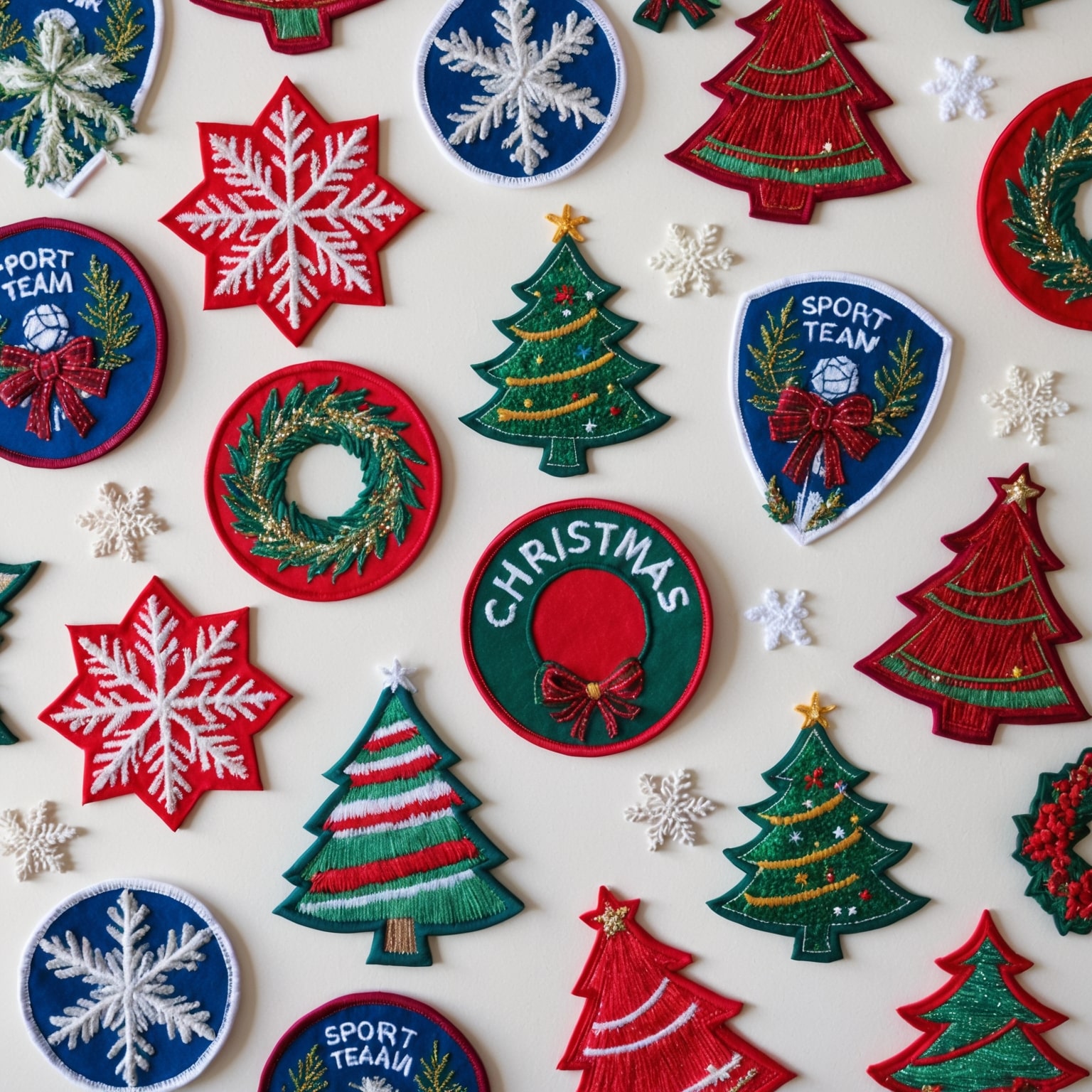Imagine completing a challenging mission or a long deployment, where every day tested your limits and every decision mattered. As you return home, a custom commemorative patch is handed to you—an emblem that captures the essence of your journey, your achievements, and the camaraderie of your team. This small piece of fabric holds stories of bravery, sacrifice, and triumph. Commemorative patches are more than just mementos; they are symbols of achievement and pride. But how do you create a patch that truly captures these moments? Let’s dive into the world of custom commemorative patches and discover how they celebrate missions and tours.
Commemorative patches have long been used to mark significant events, achievements, and tours. Whether for military missions, space explorations, or humanitarian efforts, these patches serve as tangible reminders of experiences and accomplishments. This article explores the significance of custom commemorative patches, addresses common concerns, and provides insights into designing patches that honor and celebrate missions and tours.
The Significance of Commemorative Patches
Symbols of Achievement:
Commemorative patches are powerful symbols of achievement. They represent the completion of missions, the overcoming of challenges, and the collective effort of a team.
- Recognition: Receiving a commemorative patch is a form of recognition, acknowledging the hard work, dedication, and success of individuals and teams.
Example: A military unit that successfully completes a peacekeeping mission might receive a patch featuring symbols of peace and unity, highlighting their contribution to global stability.
Fostering Camaraderie:
These patches also foster camaraderie among team members. Wearing the same patch creates a sense of unity and shared identity, reinforcing the bonds formed during the mission or tour.
- Team Spirit: Commemorative patches serve as a visual representation of the shared experiences and achievements, enhancing team spirit and cohesion.
Example: Astronauts on a space mission might wear patches with the mission emblem, symbolizing their collective journey and achievements in space exploration.
Designing Custom Commemorative Patches
Designing a custom commemorative patch that effectively honors and captures the essence of missions and tours involves several key elements. From reflecting the mission’s purpose to ensuring the patch is personal and durable, each aspect plays a crucial role in creating a meaningful and memorable emblem. Here’s an in-depth look at how to design custom commemorative patches:
1. Reflecting the Mission:
The core of any commemorative patch design is its ability to reflect the mission or tour it represents. This involves incorporating symbols, colors, and images that convey the essence of the experience.
- Mission Symbols: Symbols are a powerful way to encapsulate the key elements of a mission. These could include geographical features, specific tools or equipment used, or iconic landmarks.
Example: For a peacekeeping mission, incorporating symbols like olive branches, doves, or the United Nations emblem can highlight the mission’s focus on peace and stability. - Color Significance: Colors play a significant role in conveying the mood and theme of the mission. Bold, vibrant colors can signify strength and courage, while softer tones might represent peace and solidarity.
Example: A search and rescue mission might use bright colors like red and yellow to symbolize urgency and readiness, whereas a humanitarian mission might use blue and white to denote peace and aid. - Imagery and Icons: Including imagery that is specific to the mission, such as maps, flags, or specialized equipment, can make the patch instantly recognizable and relevant.
Example: A military deployment patch might feature an outline of the deployment region along with insignias of the involved units.
2. Personalizing the Patch:
Adding personal touches to the patch enhances its sentimental value and makes it a treasured keepsake for those who receive it.
- Names and Dates: Including the names of team members, the mission name, and the dates of service can personalize the patch, making it unique to the specific mission.
Example: A patch for a disaster relief mission might include the name of the operation, the year, and the names of the key responders. - Achievements and Honors: Highlighting specific achievements or honors earned during the mission can add a layer of recognition to the patch.
Example: A patch for a successful military operation could include a banner with the mission’s code name and a symbol of the achieved objective, such as a star for excellence or a laurel wreath for victory.
3. Using Quality Materials:
The choice of materials impacts the durability and appearance of the patch, ensuring it stands the test of time and remains a proud symbol of the mission.
- Embroidery: Embroidered patches are known for their durability and classic look. High-density stitching ensures that the patch can withstand wear and tear.
Example: An embroidered patch for a marine expedition might feature tightly stitched elements that depict the sea, ships, and marine life. - PVC: For patches that need to endure extreme conditions, PVC is a great option. It is waterproof and resistant to dirt and grime, making it ideal for outdoor or tactical missions.
Example: A search and rescue team’s patch might be made from PVC to ensure it remains intact and legible in harsh environments. - Woven Fabric: Woven patches offer fine detail and flexibility, making them suitable for intricate designs and comfortable wear.
Example: A humanitarian mission patch might use woven fabric to capture detailed imagery of aid efforts and local landmarks.
Addressing Common Concerns
Cost of Custom Patches
Custom commemorative patches might be seen as expensive, especially for large teams or frequent missions.
Solution: Cost-Effective Production
Ordering patches in bulk and selecting simpler designs can help manage costs without compromising the patch’s significance and quality.
Example: A non-profit organization can order a large batch of patches with a timeless design for various missions, reducing the cost per unit.
Limited Use of Patches
Some might argue that patches are less functional compared to other commemorative items like medals or certificates.
Solution: Multifunctional Designs
Patches can be designed with multifunctional elements, such as Velcro backings for easy attachment and removal, or integrated into other commemorative items like plaques or jackets.
Example: A patch with a Velcro backing allows team members to easily attach it to their uniforms, bags, or display boards, enhancing its practicality.
Future Trends in Commemorative Patch Design
Technological Integration:
As technology advances, commemorative patches are evolving to include features such as RFID chips and QR codes, adding functionality and interactive elements.
Example: A patch with an embedded QR code could link to a digital archive of the mission, including photos, videos, and stories, providing a modern twist to traditional patches.
Sustainable Materials:
With an increasing focus on sustainability, patch materials are shifting towards eco-friendly options, such as recycled fabrics and biodegradable materials.
Example: An environmental conservation mission might choose patches made from recycled polyester, aligning with their commitment to sustainability.
Practical Tips for Creating Impactful Commemorative Patches
1. Collaborate with Team Members:
Engaging team members in the design process ensures that the patch reflects their collective experiences and sentiments, fostering a deeper connection to the patch.
- Design Workshops: Organizing workshops where team members can contribute ideas and feedback can result in a design that everyone feels proud of and connected to.
Example: Before finalizing the design for a deployment patch, hold a session where soldiers can suggest symbols and elements that represent their shared experiences.
2. Focus on Symbolism:
Ensure that the patch’s design elements are rich in symbolism and meaning, reflecting the mission’s objectives and achievements. This can enhance the emotional connection and significance of the patch.
- Symbolic Imagery: Use imagery, colors, and text that encapsulate the mission’s purpose, challenges overcome, and successes achieved.
Example: For a disaster response team, symbols like a shield for protection, a globe for global outreach, and a heartbeat line for saving lives can be incorporated.
3. Choose the Right Size and Shape:
Selecting an appropriate size and shape for the patch is crucial for its intended use and display. Consider where the patch will be worn or displayed and ensure it fits appropriately.
- Tailored Design: Depending on the application, choose a size and shape that complements the item it will be attached to, ensuring it’s neither too large nor too small.
Example: A rectangular patch might be perfect for a jacket sleeve, while a circular patch could be ideal for a cap or backpack.
By thoughtfully designing custom commemorative patches, you can create lasting symbols of achievement that honor and celebrate the dedication and success of those involved in missions and tours. These patches not only serve as mementos but also as powerful reminders of shared experiences and accomplishments.
Honoring Every Achievement: The Lasting Impact of Custom Commemorative Patches
Commemorative patches are powerful symbols that celebrate missions and tours, capturing the essence of achievements and fostering a sense of unity among team members. By understanding the significance of these patches, addressing common concerns, and leveraging future trends, you can create meaningful and impactful commemorative patches. Whether reflecting mission objectives, recognizing individual contributions, or enhancing team spirit, custom commemorative patches are a lasting tribute to the dedication and success of those who wear them.
If you are interested in purchasing high-quality custom patches, feel free to call us at 1-877-503-8485 or fill out one of our FREE quotes here.




